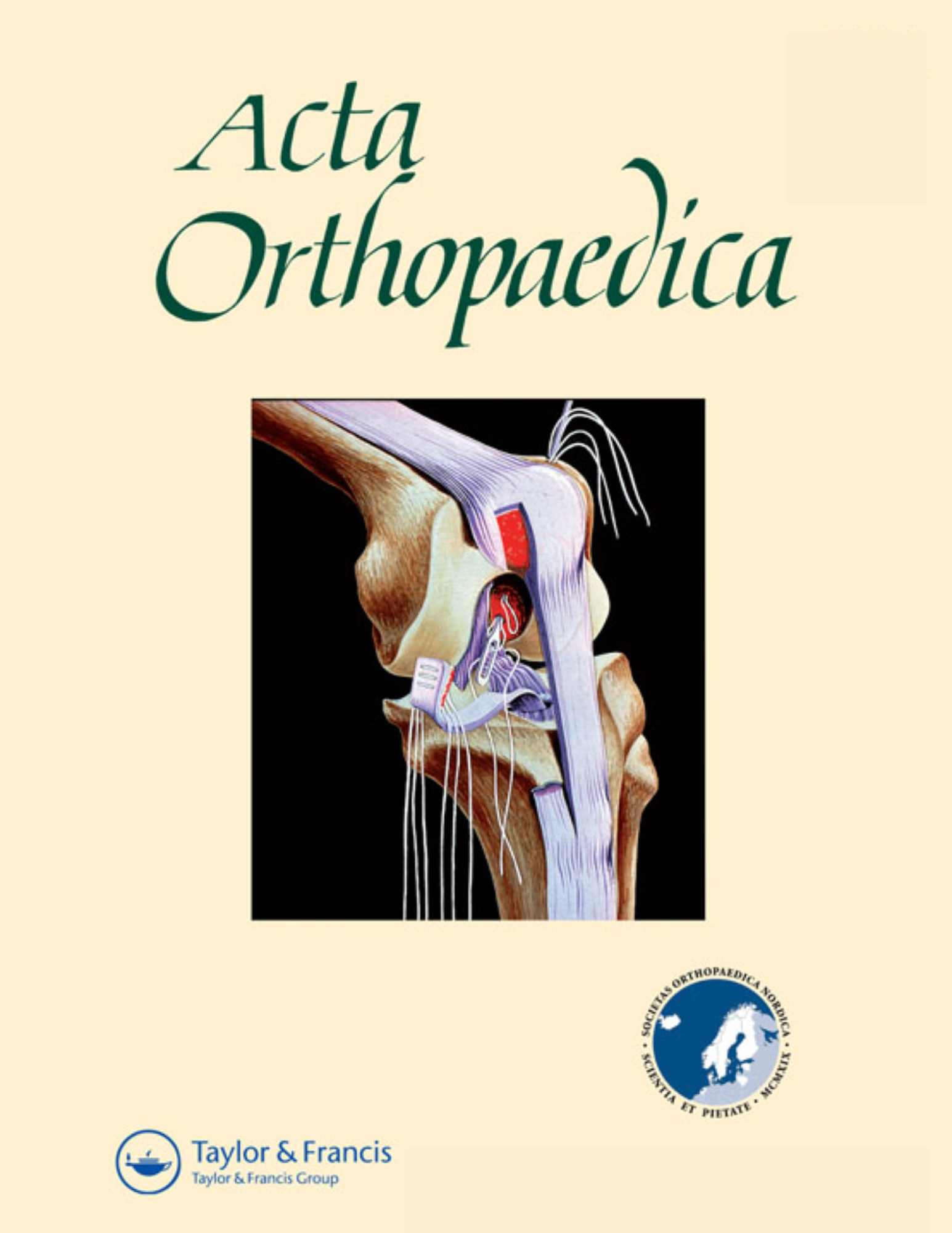
Metal release does not translate to increased metal allergy in metal-on-polyethylene THA

Metal release does not translate to increased metal allergy in metal-on-polyethylene THA
Metal release and metal allergy after total hip replacement with resurfacing versus conventional hybrid prosthesis 5-year follow-up of 52 patients
Acta Orthop. 2014 Aug;85(4):348-54. doi: 10.3109/17453674.2014.922730. Epub 2014 Jun 16.Synopsis
54 patients with primary osteoarthritis were randomized to undergo either reintroduced metal-on-metal (MOM) total hip resurfacing arthroplasty or metal-on-polyethylene (MOP) total hip arthroplasty, with the purpose of determining if the added excretion of metal ions from MOM results in heightened prevalence of metal allergies. A significant increase in cobalt and chromium in the MOM group was observed throughout the 5 year study period, but did not translate to increased metal allergy.
Was the allocation sequence adequately generated?
Was allocation adequately concealed?
Blinding Treatment Providers: Was knowledge of the allocated interventions adequately prevented?
Blinding Outcome Assessors: Was knowledge of the allocated interventions adequately prevented?
Blinding Patients: Was knowledge of the allocated interventions adequately prevented?
Was loss to follow-up (missing outcome data) infrequent?
Are reports of the study free of suggestion of selective outcome reporting?
Were outcomes objective, patient-important and assessed in a manner to limit bias (ie. duplicate assessors, Independent assessors)?
Was the sample size sufficiently large to assure a balance of prognosis and sufficiently large number of outcome events?
Was investigator expertise/experience with both treatment and control techniques likely the same (ie.were criteria for surgeon participation/expertise provided)?
Yes = 1
Uncertain = 0.5
Not Relevant = 0
No = 0
The Reporting Criteria Assessment evaluates the transparency with which authors report the methodological and trial characteristics of the trial within the publication. The assessment is divided into five categories which are presented below.
3/4
Randomization
2/4
Outcome Measurements
4/4
Inclusion / Exclusion
4/4
Therapy Description
4/4
Statistics
Detsky AS, Naylor CD, O'Rourke K, McGeer AJ, L'Abbé KA. J Clin Epidemiol. 1992;45:255-65
The Fragility Index is a tool that aids in the interpretation of significant findings, providing a measure of strength for a result. The Fragility Index represents the number of consecutive events that need to be added to a dichotomous outcome to make the finding no longer significant. A small number represents a weaker finding and a large number represents a stronger finding.
Why was this study needed now?
Metal-on-metal (MOM) total hip arthroplasties were the standard of care in the 1960's and 1970's, but researchers soon discovered MOM implants released high levels of cobalt, chromium, and nickel. Focus shifted towards metal-on-polyethylene (MOP) arthroplasties instead, which were later found to have a high incidence of osteolysis and aseptic loosening in young, active patients, which many consider an even greater problem. Consequently, MOM arthroplasties were reintroduced, but the risk of metal hypersensitivity has become an issue due to greater absolute number of wear particles. Based on the hypothesis that metal allergies can be caused by prolonged metal exposure, the aim of this study was to determine if MOM arthroplasties increased the incidence of metal allergies in exposed patients.
What was the principal research question?
Is there greater incidence of metal allergy in patients undergoing metal-on-metal total hip resurfacing arthroplasty compared to patients undergoing metal-on-polyethylene total hip arthroplasty 5 years post-surgery?
What were the important findings?
- A significant 10- to 20- fold increase in cobalt and chromium was observed in the urine of the MOM group throughout the 5 year follow-up (p<0.05), while no differences were observed in patients receiving implants with MOP or COP.
- The patch test revealed no significant difference in the incidence of metal hypersensitivity at 5 years between the MOM and MOP/COP groups, nor between MOP and COP patients (both p>0.05).
- The lymphocyte transformation assay revealed no significant difference in cellular reactivity at 5 years between the MOM and MOP/COP groups, nor between MOP and COP patients (both p>0.05).
What should I remember most?
The significant increase of cobalt and chromium levels throughout the 5 year study period did not translate to increased metal allergy in patients that underwent metal-on-metal (MOM) total hip arthroplasty.
How will this affect the care of my patients?
It appears MOM total hip arthoplasty does not increase the incidence of metal allergies, but the long-term effects of metal exposure still remain uncertain. Results must be interpreted with caution, as the metel-on-metal group lost 7 patients to final follow-up.
Learn about our AI Driven
High Impact Search Feature
Our AI driven High Impact metric calculates the impact an article will have by considering both the publishing journal and the content of the article itself. Built using the latest advances in natural language processing, OE High Impact predicts an article’s future number of citations better than impact factor alone.
Continue



 LOGIN
LOGIN

Join the Conversation
Please Login or Join to leave comments.